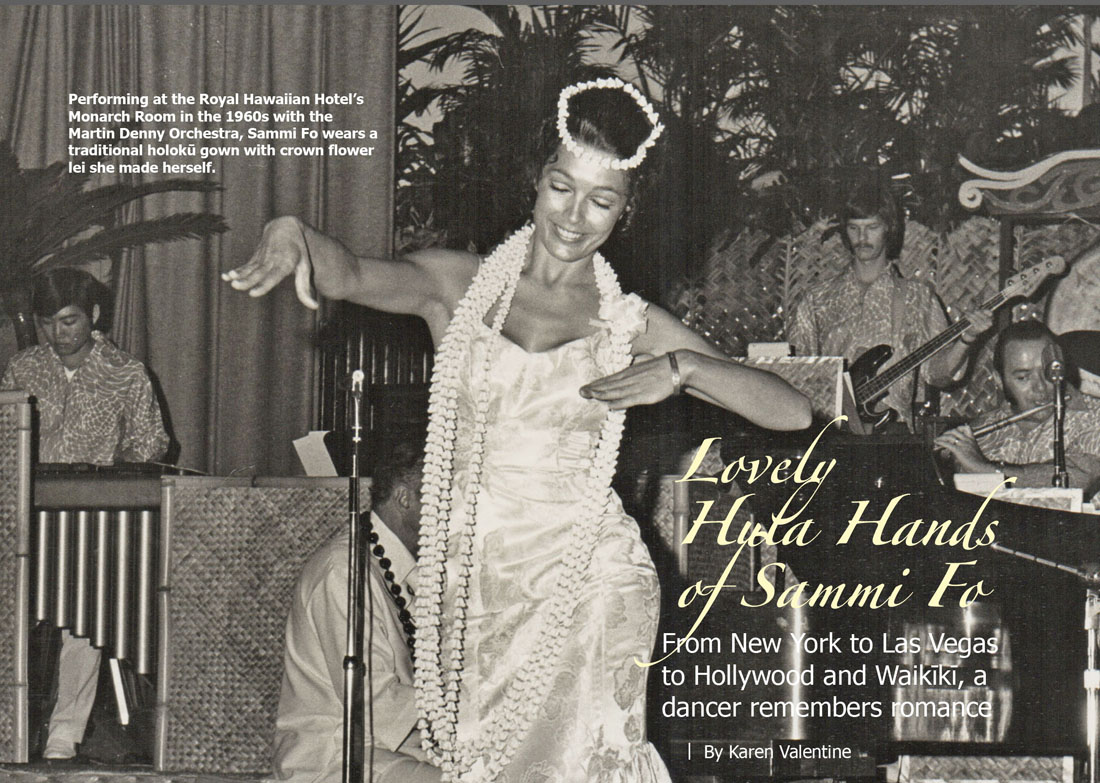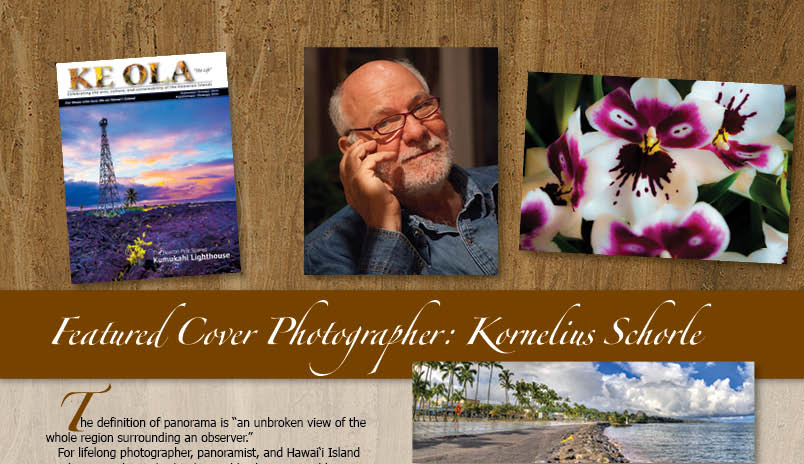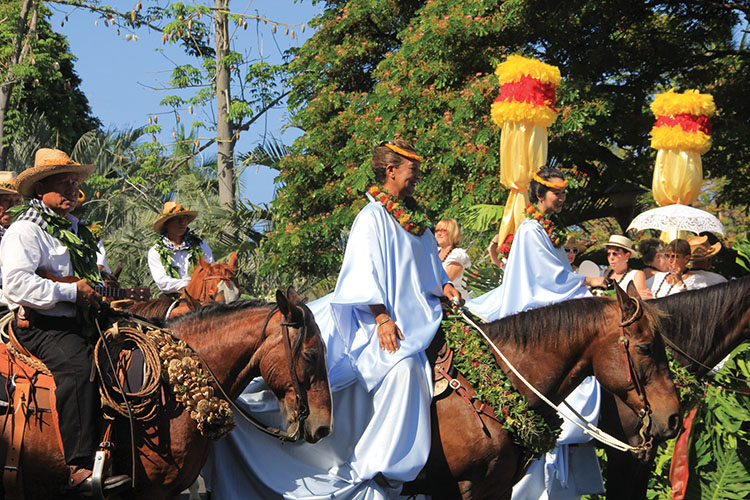Lovely Hula Hands of Sammi Fo

Buddy Fo had an impeccable ear for music…and a sharp eye for a beautiful woman. The popular musician and Lifetime Achievement Nā Hōkū Hanohano Award winner from the 1960s was recognized for his tune, rhythm, and complicated harmonies. It was no wonder he chose the most talented hula dancer to accompany his artistry.
As luck would have it, Buddy and Sammi Fo composed a beautiful love score while they were at it.
Sammi Fo was already an accomplished professional dancer and choreographer who had performed with Elvis Presley, Don Ho, and in Broadway shows, when they paired up, and she was happy to let Buddy be the star. She says that everything Buddy touched was a success that turned to gold, yet in truth, her ideas and contributions were just as valuable to the duo’s success as live performers and radio personalities.

An incomparable hula dancer and timeless beauty, Sammi Fo herself may not realize the starlight she carries on stage and the impact she has on an audience. From New York to Las Vegas to Hollywood, from Waikīkī to Maui and, finally, Hawai‘i Island, Sammi has been gracing stages and the big screen for six decades. She hasn’t lost one iota of her grace, figure, personality, or beauty, neither inside nor out. Her ability to interpret a story through hula is truly exquisite.
As a young, local girl growing up on O‘ahu, Sammi wanted to be a dancer. She often imagined she was on the big stage and organized shows with an imaginary troupe of dancers in her backyard. She was taking jazz and tap dance lessons at Punahou School when she met another student who had been in the original Broadway cast of West Side Story. She thought, “Yes, that’s what I want to do. I want to be in a Broadway show!”
She reached for the top and moved to New York where she continued dance lessons, and it seemed everything fell magically into place for her everywhere she went.
Walking down the street one day, she heard a voice behind her: “Hey, tita!” (Hawaiian pidgin slang for sister). Flipping her black, waist-length hair around she answered sassily, “Who you calling one tita?”
It was another transplant from Hawai‘i, who directed her to the Lexington Hotel’s famous Hawaiian Room. During the ‘40s through ‘60s, the best of the best Hawaiian performers worked there.
Sammi walked in and the manager asked her if she could dance hula.
“Oh, yes, I can do anything,” she remarked. Today, she laughs at her 18-year-old naiveté and bold confidence, because in reality she had never danced hula. “I went home and thought, ‘Oh, my god. They’re gonna fire me before they hire me.’”
In town at the time was Keola Beamer (not the famous musician of today, but his uncle). He choreographed for the Hawaiian Room as well as the Broadway show, 13 Daughters.
“Keola Beamer was such a nice guy. I just loved him,” said Sammi. “I had heard about the Beamers, and was so embarrassed when he said, ‘I understand you dance hula.’ I confessed, ‘No, I don’t know how.’ He touched my arm and said, ‘Ne’ mind; I teach you.’ And that’s how I learned to dance hula.”
Sammi still uses what she calls the Beamer method, characterized by a graceful swaying and rolling of the feet.
“All the dancers were Maiki Aiu dancers,” says Sammi. “She was the number-one hula teacher and choreographer in the islands. Her dancers taught me, and later I took lessons from her when I came back to Hawai‘i.”
Sammi would also take private lessons from Keola’s sister, Aunty Nona Beamer. Along with Maiki Aiu, all three provided the hula foundation upon which she built her own style.
Sammi remembers a fire dancer at the Hawaiian Room named Kui Lee. He also became famous as a Hawaiian singer-songwriter who composed songs for Don Ho.
“He used to talk about Buddy Fo and how talented he was, saying Buddy Fo this, Buddy Fo that, and ‘Don’t you know Buddy Fo?’”
Another education for Sammi came with auditioning on New York’s big stages. After a series of incidents of good fortune, Sammi soon landed in the chorus of the traveling show, Flower Drum Song, and headed for Las Vegas.
“It was my dream come true,” she says.
Playing in Las Vegas was a grand new experience for the young Sammi. She met a lot of famous entertainers there and learned to survive.
“In Vegas, I heard about Martin Denny playing at the Sands Hotel. There was this good-looking Hawaiian in the group who had so much personality, and they were all so animated playing the gongs and bird calls and all kinds of exotic noise makers. I thought, ‘That guy’s really cute.’”
She and her friends went to see the show often, and eventually they met the musicians, including Buddy Fo.
He and Sammi hit it off, and they developed a casual friendship that heated up over time.
Flower Drum Song eventually closed, and Sammi decided to try her luck in Hollywood.
“My friends said to go to the Seven Seas—a famous Hawaiian night club where I got a job dancing, and that’s how I got to be in the movies, meet Elvis Presley, and be in his movies, Viva Las Vegas and Fun in Acapulco, plus work as an extra in a lot of others.” Later, in Honolulu, Sammi would become the featured solo dancer in Elvis’ Blue Hawai‘i TV special. “Elvis was very friendly and down to earth.”
Sammi was called back to Vegas when Flower Drum Song reopened. She danced in other shows, too, and spent more time with Buddy Fo.
“I was so impressed with his ear for music. He could tell exactly who was out of tune in a large group. I was fascinated.” He soon left town, however, and returned with Martin Denny to Honolulu.
“One day during an audition, I got a phone call,” Sammi said. “It was Buddy. He asked me to marry him and I said yes.”
He was putting his popular group, The Invitations, back together and planned to make Sammi part of their show. It was the first Hawaiian music group to record on a mainland label and bring the island flavor, romance, and nostalgia to audiences both in Hawai‘i and abroad. Sammi’s pregnancy with their son, Kana‘i, soon after they married delayed her for a while, but soon she was back on stage.
“Waikīkī in those days was a very romantic era. It was relaxed and all the musicians hung out together,” Sammi says. “The dancers were all tall, slim, beautiful Hawaiian women, never overweight. The holokū was the main dress for solo hula dancers. It had a train and you had to learn to kick it as you danced. We danced everything, including comedy hula and naughty hula, all very animated. The songs were so romantic, with the feeling of Hawaiiana of that time. There were not as many people. The streets were lined with plumeria blossoms. You’d drive down Kalakaua Avenue with windows open and the fragrance wafting everywhere.”
She joined the John Rowles Show as lead dancer and choreographer at the Monarch Room at the famous Royal Hawaiian Hotel when Buddy decided to take a break from performing. She and Buddy also put together a show for Don Ho at the Hilton Hawaiian Village and Sammi was in several episodes of the original TV show, Hawai‘i Five-0.
After spending 10 years in Honolulu, Kui Lee invited Buddy to join his show on Maui, where the entertainment business was beginning to boom. The couple decided to relocate and spent the next 25 years on the Valley Isle. Having perfected all the elements of a successful act with the best music, best personality and best hula dancing, they played at the Kā‘anapali Beach Hotel, Wailea Hotel, and the Maui Tropical Plantation at Waikapu, where they developed a Hawaiian country show.
Another successful gig was created when Buddy was challenged to be a DJ on KAOI radio after he criticized the station for not playing Hawaiian music. This started a period of heightened competition by Maui radio stations to have more fun and be the best at Hawaiian music. Not wanting to use his real name as an entertainer, Buddy adopted the name, Maui Bud, which had several connotations. It was a hit. Sammi joined the show as a sassy sidekick Buddy called “Hula.” Of course the audience couldn’t see them and he often teased her about her large size.
Sammi says, laughing. “After our live show each evening, we went to bed at one or two in the morning then got up at four to read the newspapers and put together the radio show. We went on at six.”
There was time for fun, too, especially when the couple rode their motorcycle around the island during full-moonlit nights.
At age 65, Buddy decided to retire, and the couple went to the mainland where they toured the country in an RV, then settled in Montana where son Kana‘i was stationed in the Navy.
That changed again when Don Ho wanted Buddy to return as an advisor for his Waikīkī show. Sammi followed, and they also performed several nights at the Mai Tai Bar at the Royal Hawaiian Hotel.
“It was fun, we loved it,” says Sammi.
However, she adds, “The high cost of living there was difficult, and I think we both knew that Buddy didn’t have long to live.”
He had already had several heart attacks.
Friends suggested they move to Hawai‘i Island where they could buy land and build a house in Ocean View.
Even though it was miles from Waikīkī in more ways than one, the couple played live gigs around Ka‘ū with high style as the professionals they are.
Buddy passed away in April of 2011 on the day they were scheduled to perform in the Spring Fling at Na‘ālehu. The year before, Sammi had been asked to teach a hula class, which she hadn’t considered up until then, she says.
“When things like that happen, I feel it’s meant to be. Now I love teaching. I don’t know what I’d do without it. Whenever I feel down, I come to the class and feel better, and I’m so glad I came.”
Sammi teaches in Ocean View her special style of ‘auana and still performs whenever invited.
“I feel each and every one of my students was chosen for me.”
Two years in a row, Sammi, who also uses the Hawaiian name Kahōkūkauahiahionalani, or Hōkūlani for short, was selected to be the Lei Day Queen at the Hilo celebration at the Palace Theatre. “My Hawaiian name is a ‘dream name,ʻ” she says. “Translated it means, ʻThe Evening Star of the Heavens.ʻ The meaning behind the name is that I will come into ‘my own’ late in life.”
In her description, Kumu Hula Leilehua Yuen wrote, “In conveying the story, Hōkūlani is a master of translating for the non-Hawaiian-speaking audience.
“Not only do her hands tell the story, but also she translates as she dances—a difficult technique that she executes flawlessly. While her kolohe, “frisky,” hapa-haole hula are a delight to see, her hula ‘auana are so exquisite that at her most recent performance in Hilo, she received two standing ovations.”
❖


